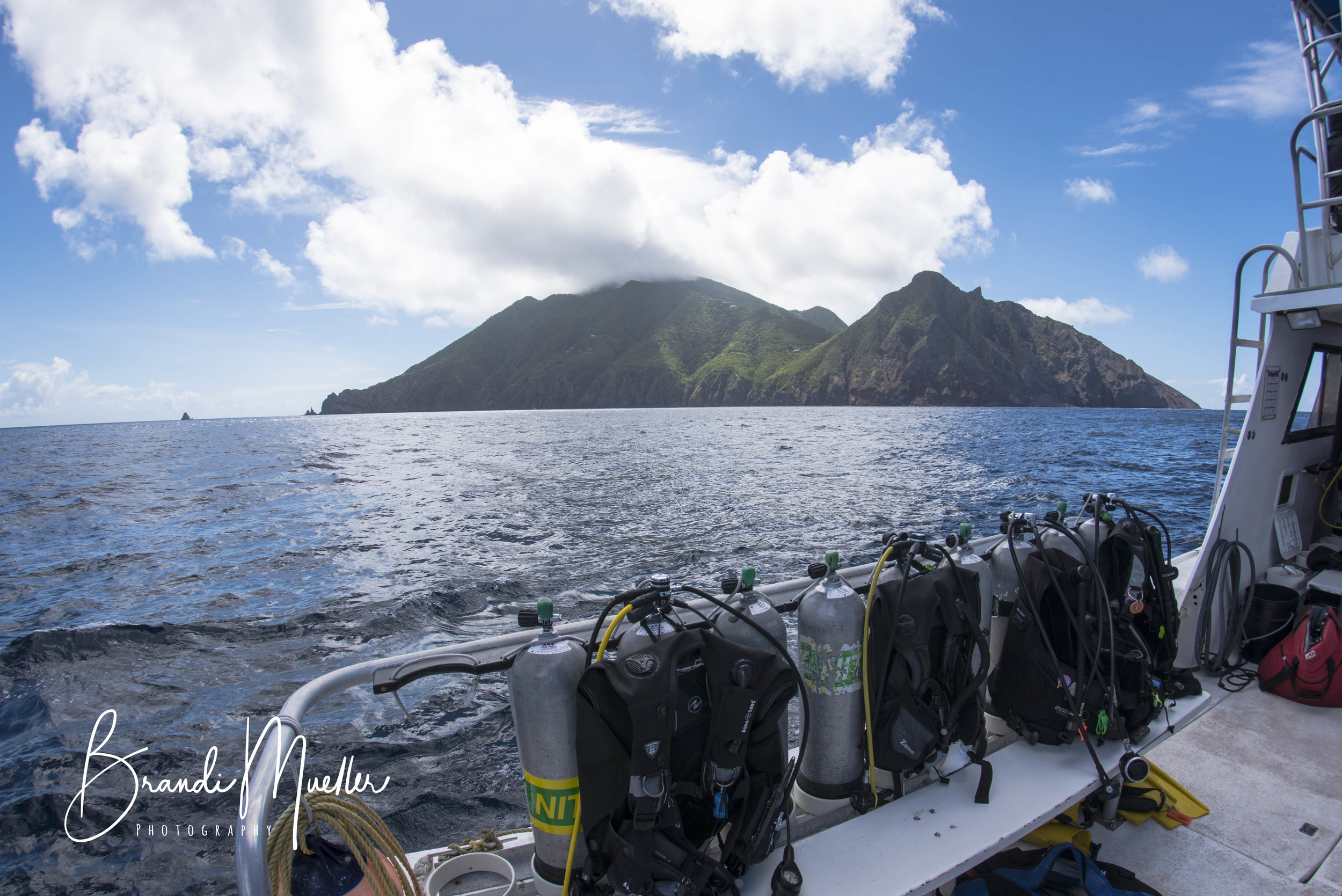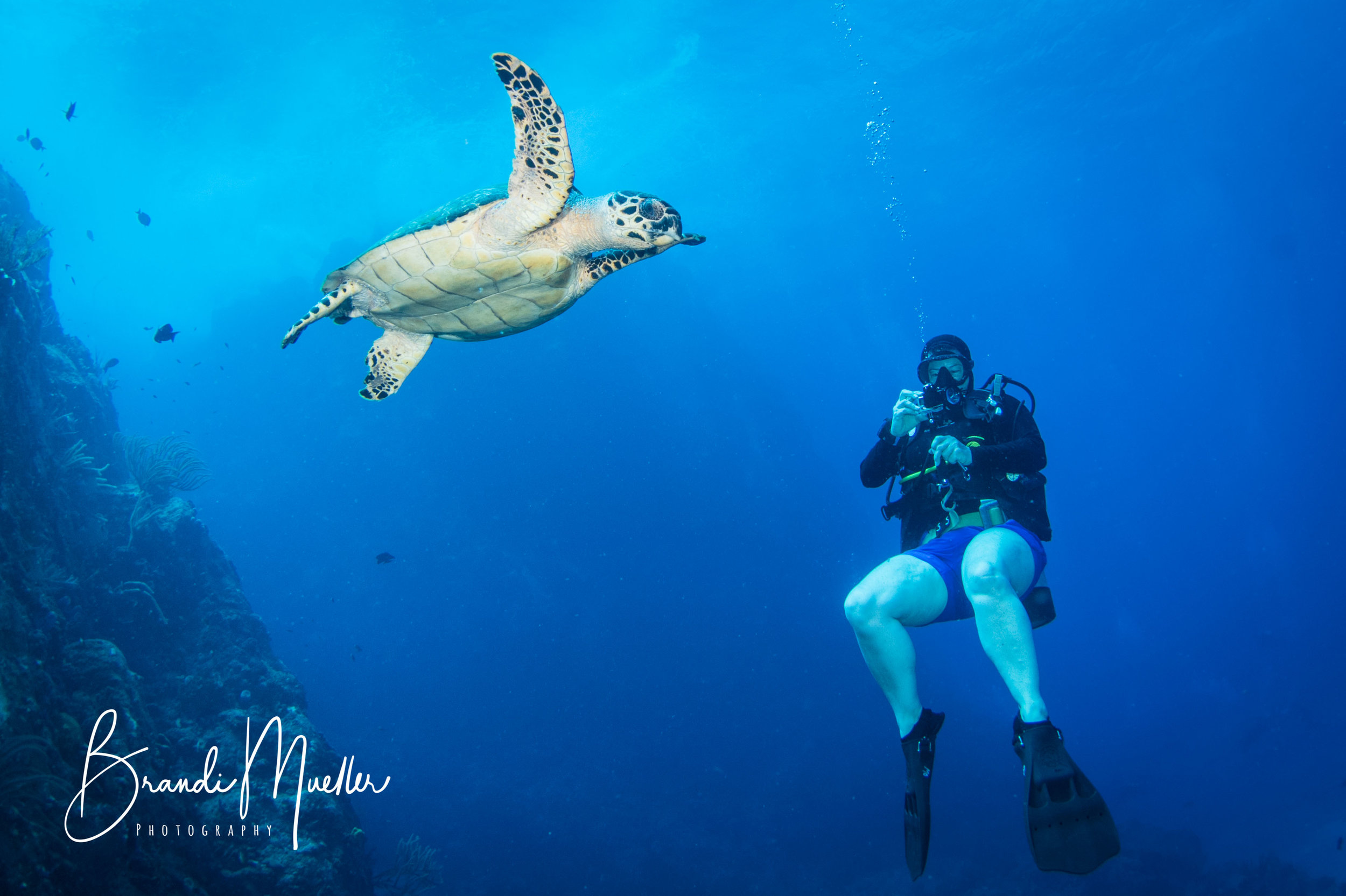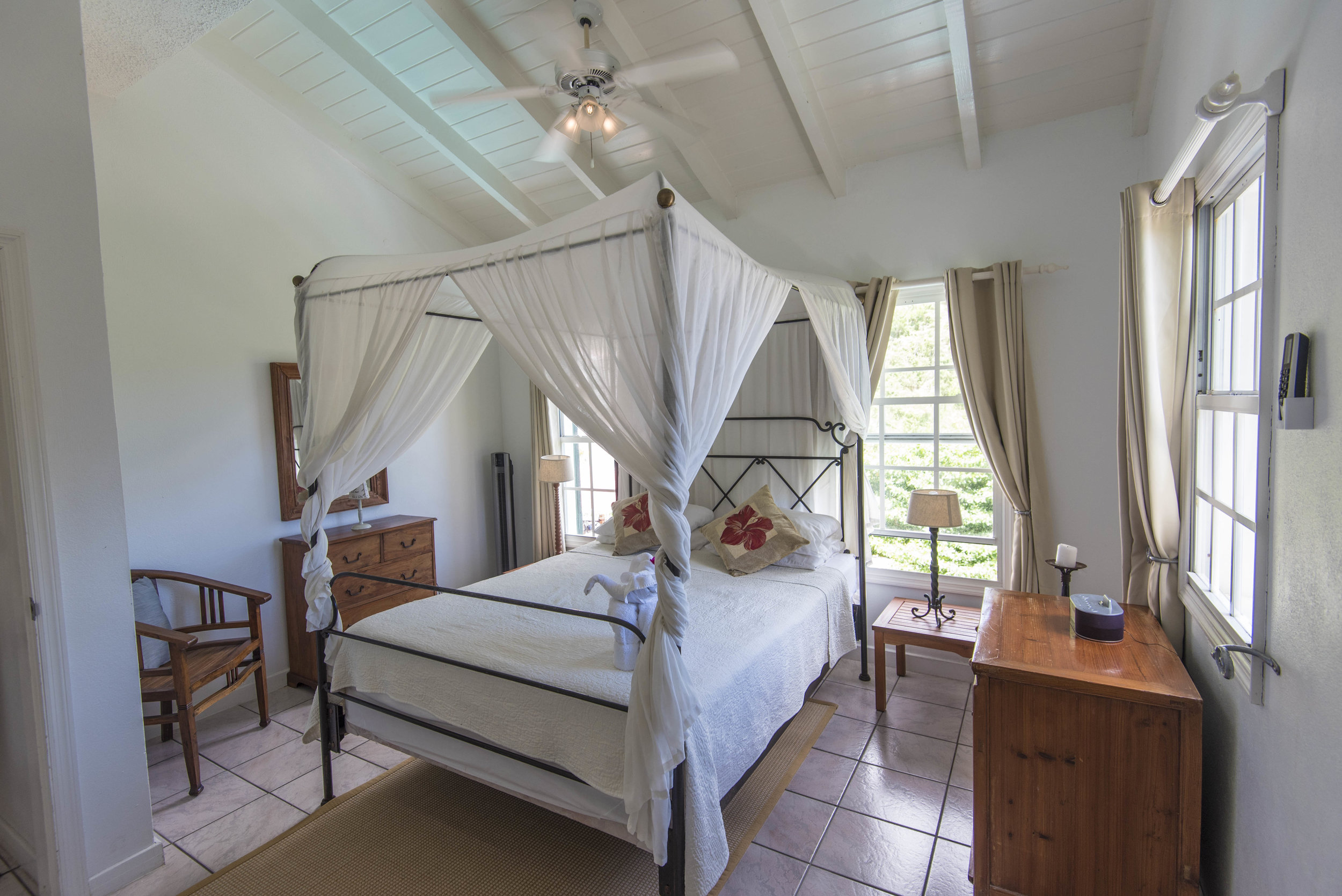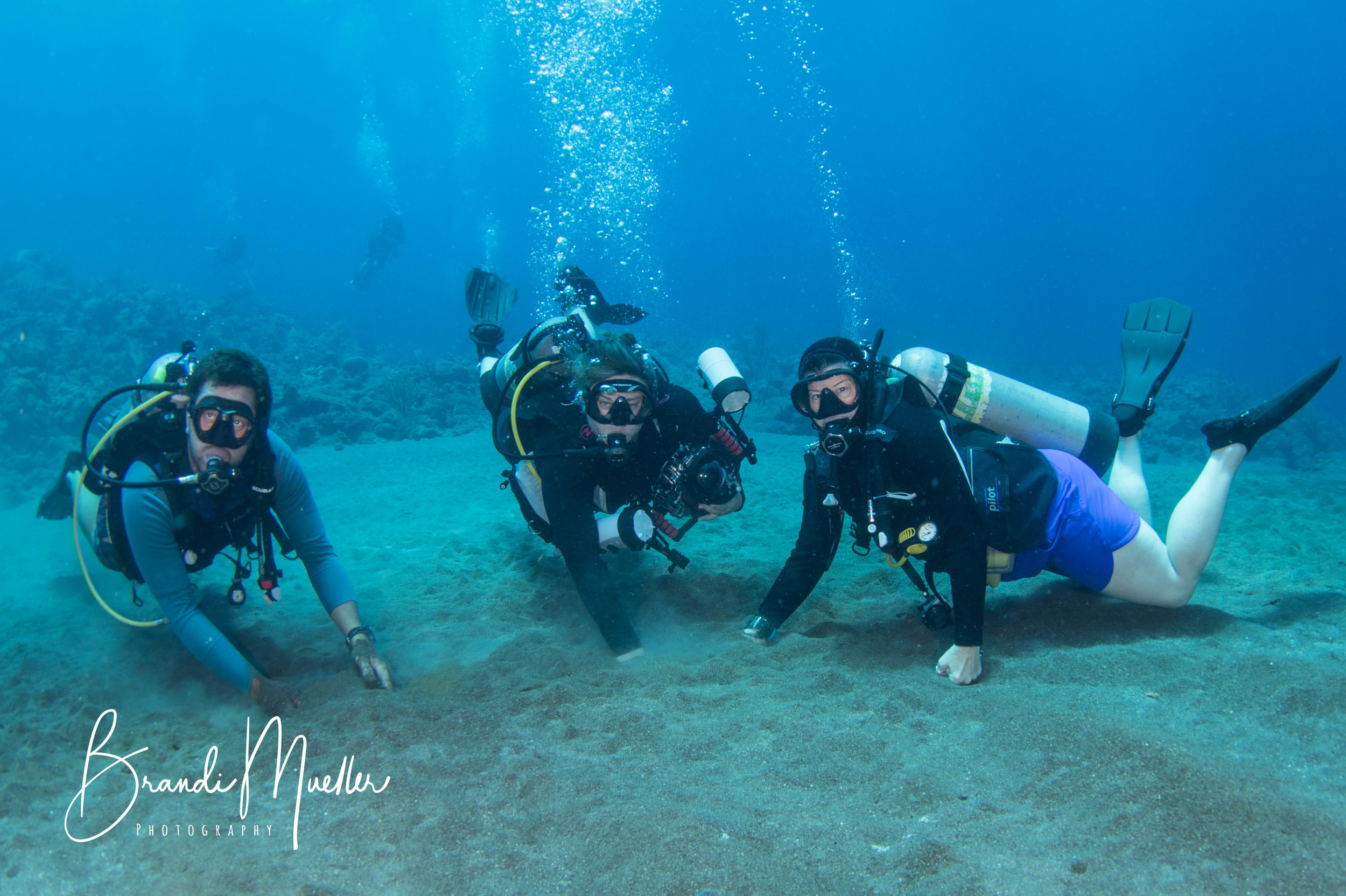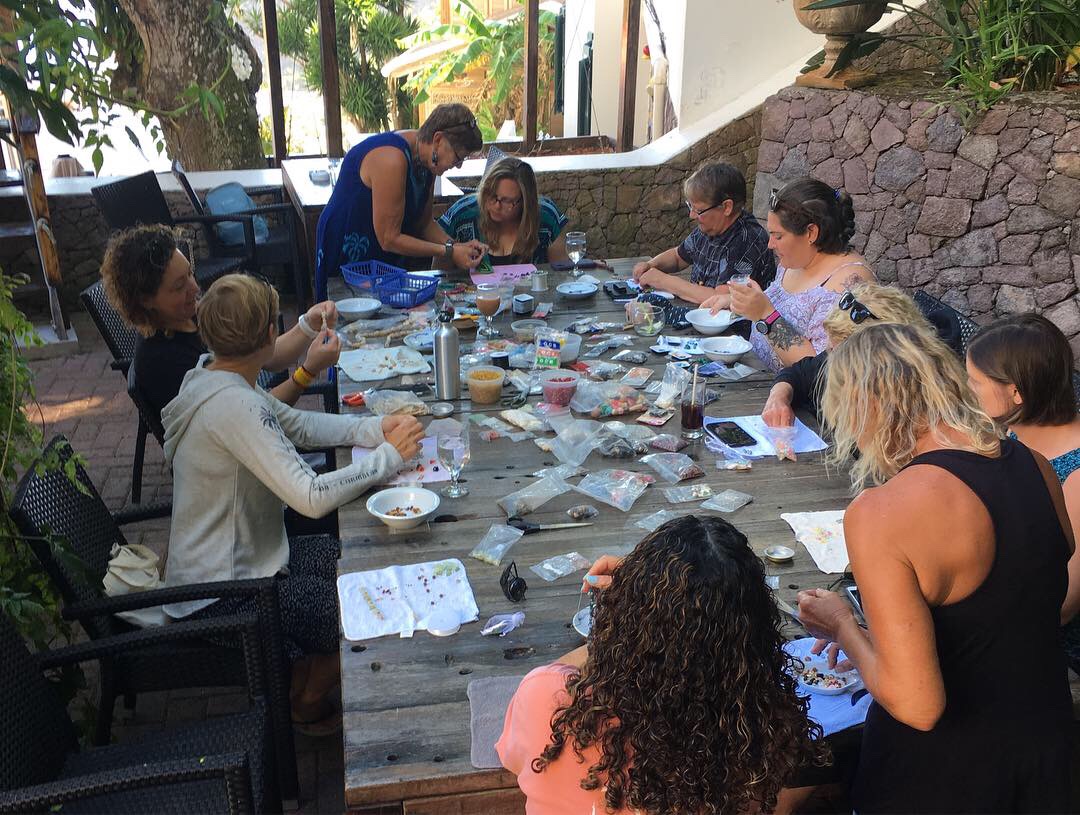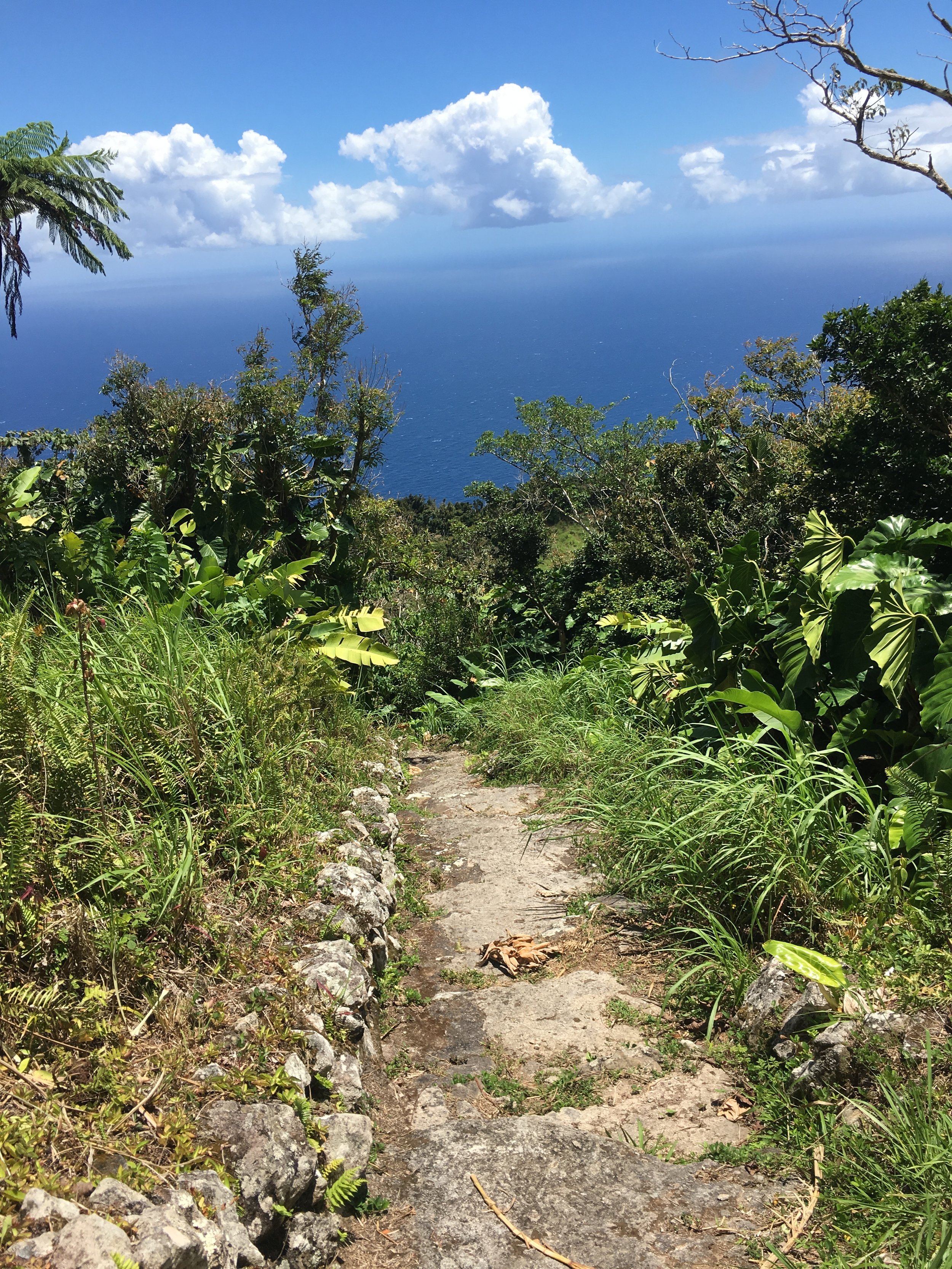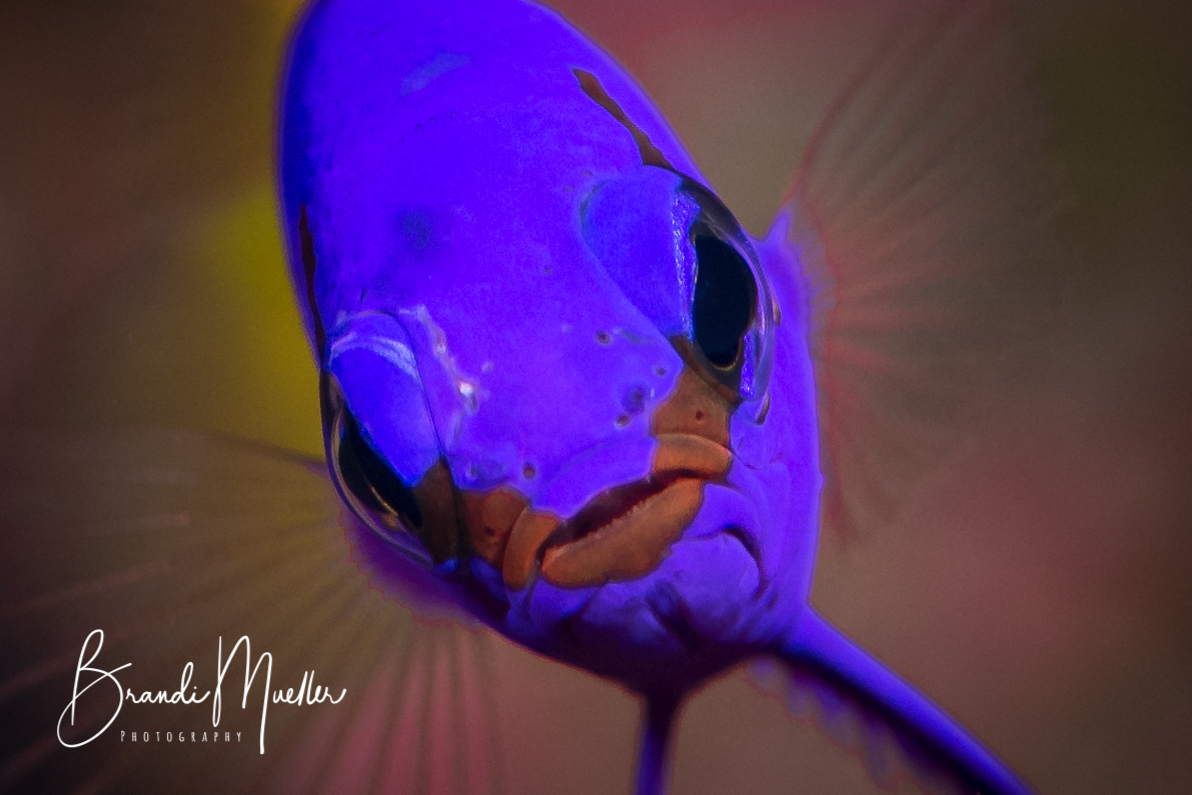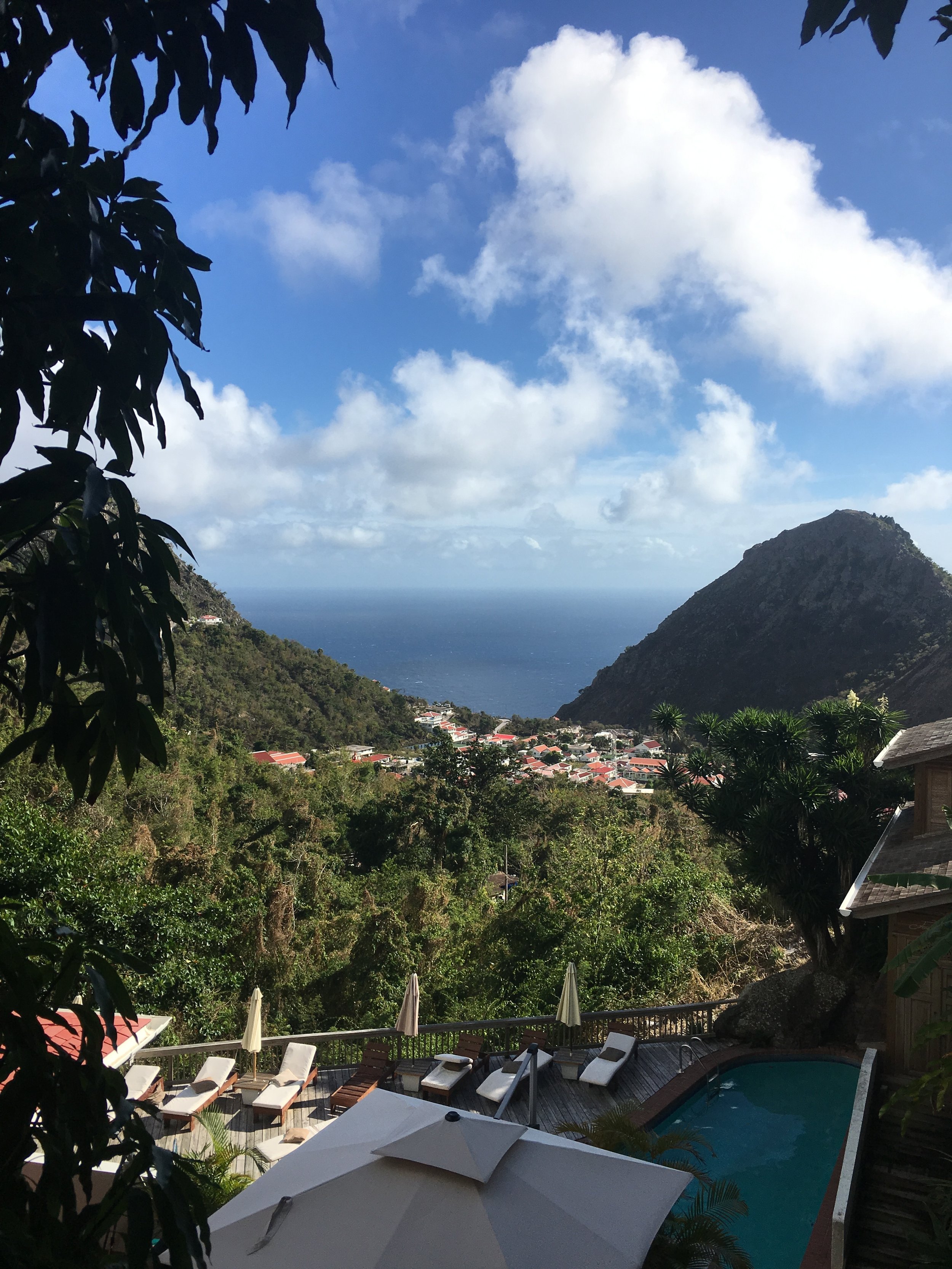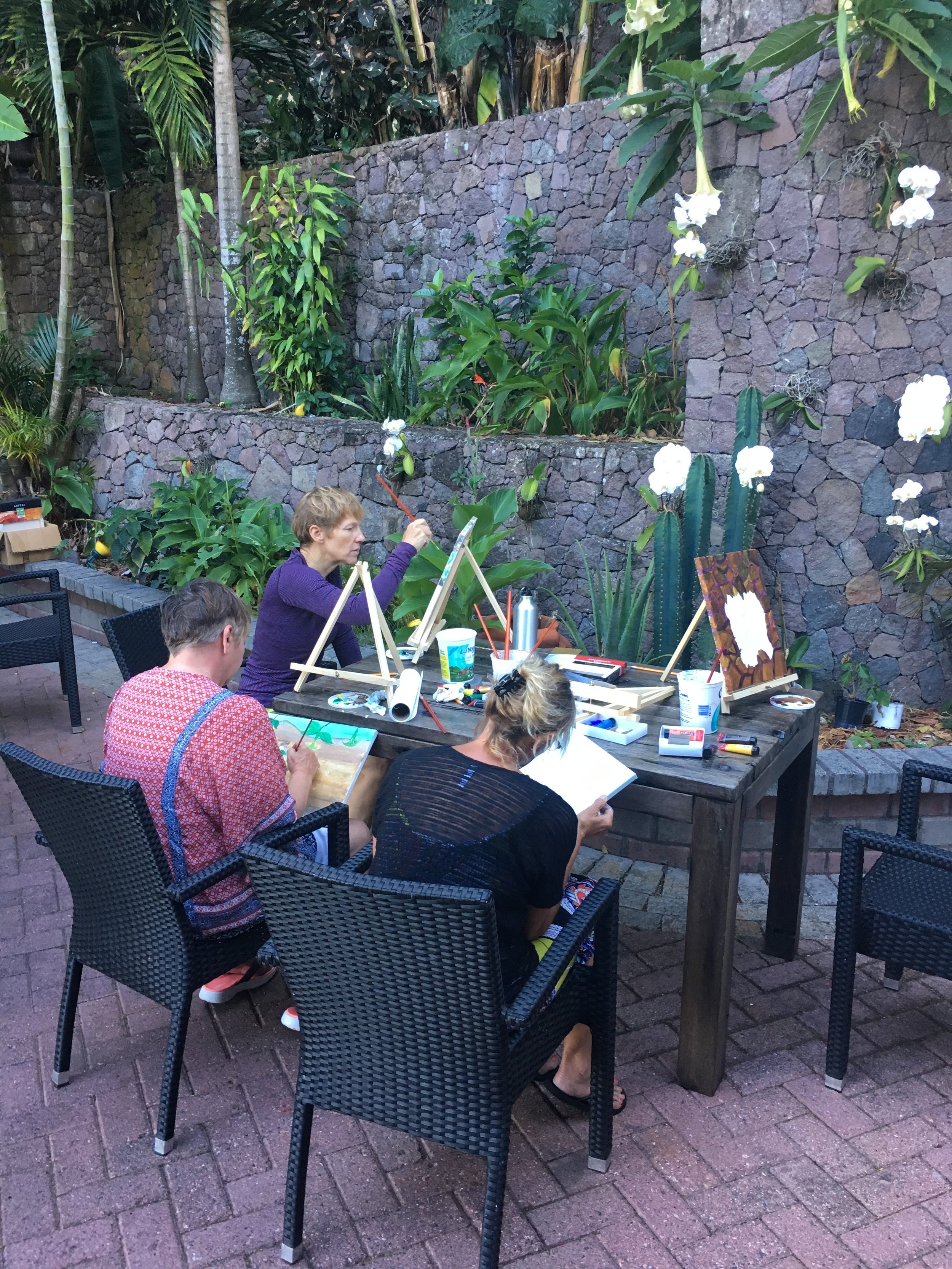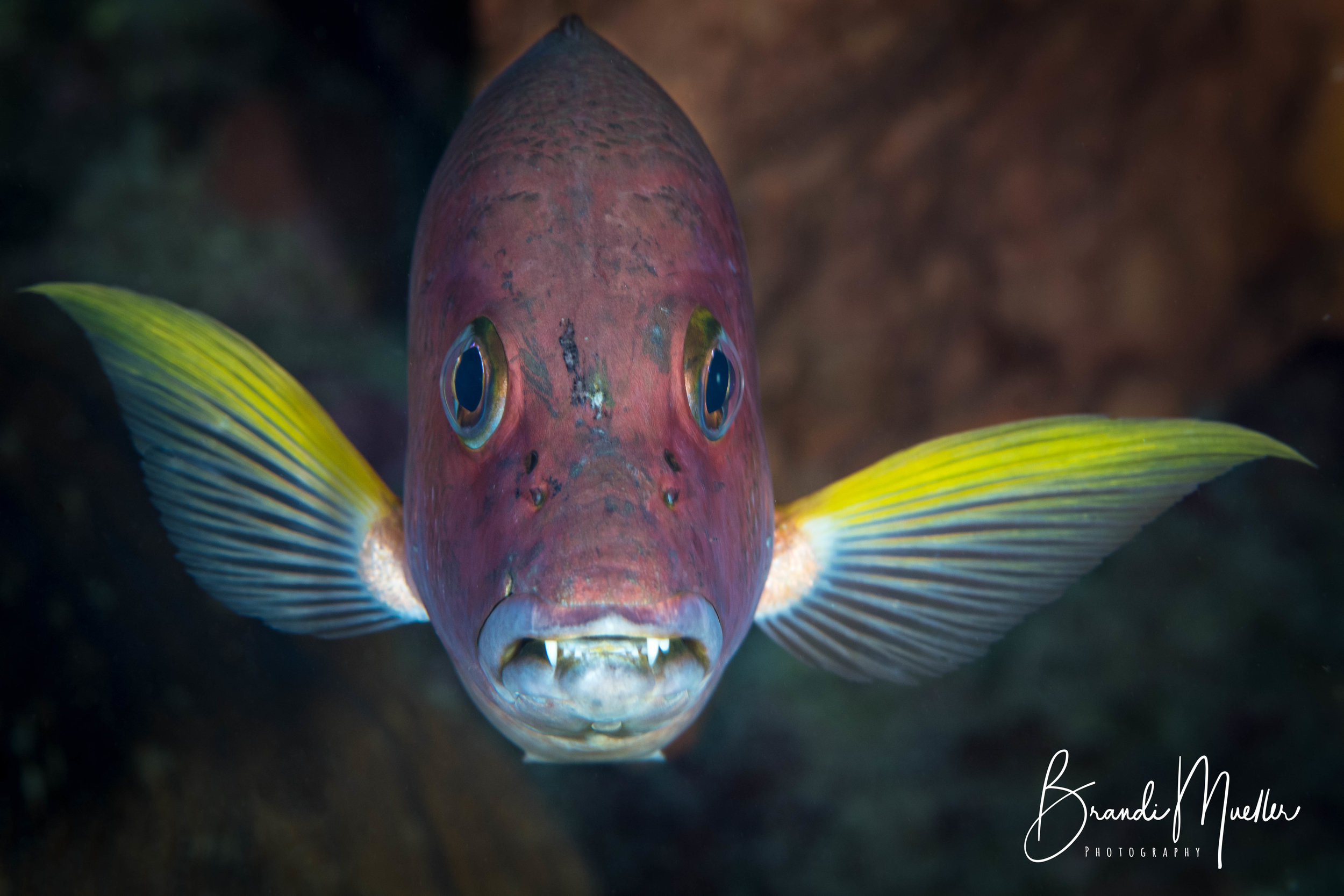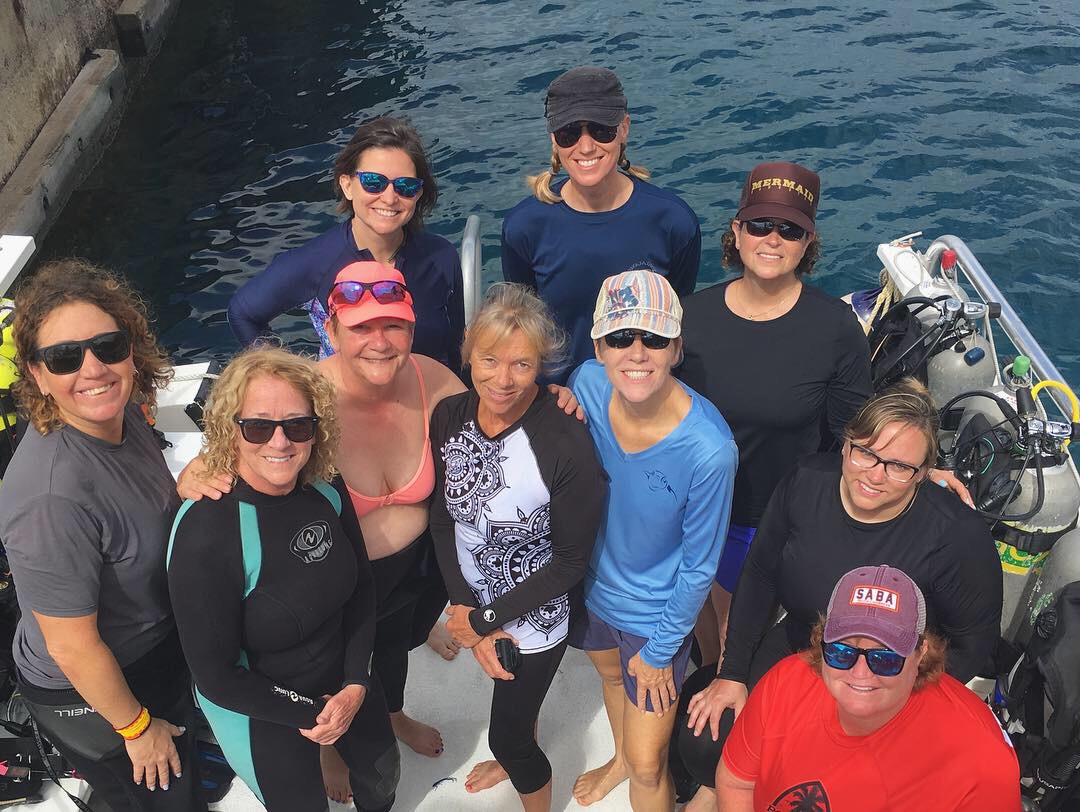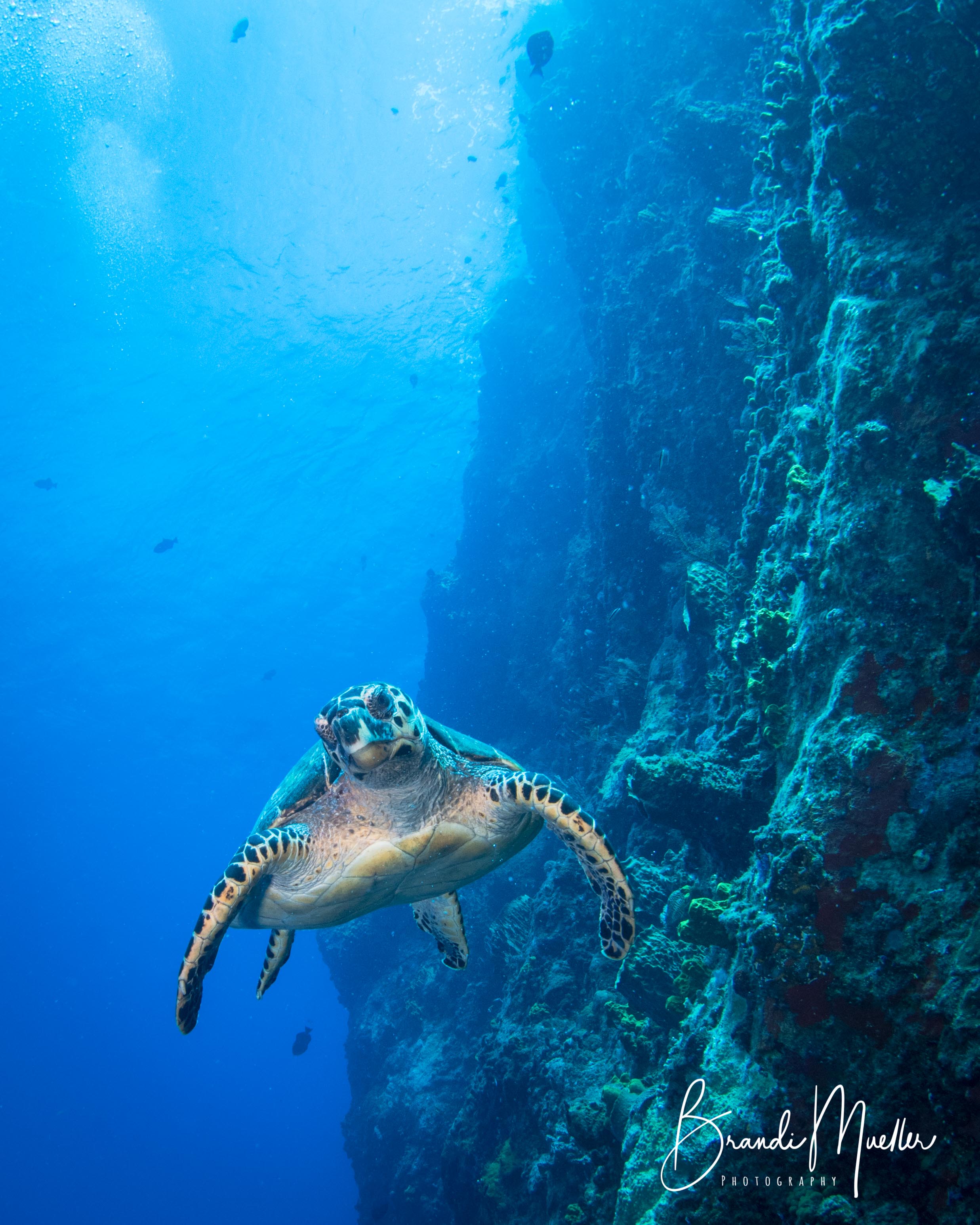The latest issue of X-Ray Magazine is available for download and you can find my article on Samoa in the issue.
Books to Pass Time
Hello out there! How is everyone? I’ve found myself with more time than normal during the pandemic and revisiting some of my favorite books. I thought I’d share.
Diving Books
100 Dives of a Lifetime - Carrie Miller
This book is perfect for right now! Need a virtual dive vacation? Want to plan your next dive trip? Get lost in some of the world’s best dives as told by Carrie Miller and incredible photos (you might find a few photos of mine in this book too!)
In my opinion this is sort of the underwater photography bible. When I first read it years ago I felt like my photography improved through osmosis through the pages. Highly recommend this to anyone looking to imporve their underwater photo skills.
For anyone looking to learn more about decompression theory, this book is great. It is easy to understand and discusses a lot of the topics recreational training prefers not to talk about. Even for those who don’t consider themselves “tech” divers, it’s an easy to read and understand text for things all divers should know, but often aren’t taught. Knowledge is so important even if you don’t plan to do deco dives.
The Soul of the Octopus - Sy Montgomery
We all love octopus. It’s a book about octopus - just read it.
Sex in the Sea - Marah J. Hardt
The ocean is so interesting! This book talks about some of the undrerwater world’s crazy reproductive behaviors you couldn’t make up if you tried! It also has a conservation theme and discusses how things like pollution and climate change are altering the behavior of some of these amazing creatures.
One of those books that is tough to put down, a true story about the discovery of a World War II German U-boat 60 miles off the coast of New Jersey. A must read for any diver.
Travel Books - My travel obsession has been fed by books. Paul Theroux taught me about long travel, spending week and months wondering without definite destinations and time restraints. Bill Bryson about the humor you must find while on the road. Kira Salak proved to me that even though I was a woman, I could go wherever I want. I love travels that seek out something - to travel to learn. Here’s some of my favorites.
I love love love this book. A shipping container of bath toys spilled during a hurricane and the author travels to find where they all went. It’s a study in ocean currents, ocean pollution, environmentalism and more.
In 1899 two women set out to race against the fictional Jules Verne character, Phileas Fogg, to travel around the world in 80 days. Since reading this Nellie Bly has become a bit of a hero to me, a female investigative journalist over 120 years ago who at one point entered an insane asylum appearing to be a patient to document the mistreatment of patients without knowing how she would be able to get out. (You should read that too - Ten Days in a Mad House.)
Last Chance to See - Douglas Adams
If you haven’t read Hitchhiker’s Guide to the Galaxy, go read that first. But once you’re finished check out this book where Douglas Adams travels to see some of the world’s most endangered animals. Komodo dragons, rhinos, kakapos and more.
The Old Patagonian Express: By Train Through the Americas - Paul Theroux
He got on a train in Boston and ended up in Patagonia. My hero. My six month trip to South America after college can be directly linked to this book (and an Outside Magazine article on hiking Torres del Paine.)
The Happy Isles of Oceania: Paddling the Pacific - Paul Theroux
In this one he gets in an kayak and paddles through 51 islands in the Pacific Ocean.
The Malay Archipelago - Alfred Wallace
Better than Darwin’s books. Alfred Wallace also came across the idea of evolution while traveling through SE Asia. This book is his journey, his observations, and the difficulties one would encounter traveling from Singapore to New Guinea over eight years starting in 1854. Plus this book is suuuuper long, great for passing time.
A woman’s solo journey through Papua New Guinea.
Pacific: Silicon Chips and Surfboards, Coral Reefs and Atom Bombs, Brutal Dictators, Fading Empires, and the Coming Collision of the World's Superpowers - Simon Winchester
This one starts on the United Island Hopper. You only think of the Pacific as paradise islands, but there is so much more.
In 1883 a volcano went off in Indonesia and changed the world.
A journey through the Australian Outback to learn about Aborginals' ancient "Dreaming-tracks.” Chatwin’s In Patagonia is an excellent read as well.
Don’t Stop the Carnival - Herman Wouk
This maybe isn’t travel, or it’s the type of travel where you decide to stay…forever….and take over a hotel in the Caribbean. We all have that dream, this guy did it.
Books about Viruses - I used to study virus evolution, here’s some of the books that might help explain more about what’s going on, but easy to read and understand.
The Coming Plague - Laurie Garrett
Don’t say we weren’t warned. Actually this book talks about past disease outbreaks and how our social and environmental practices led up to them. From Amazon - “Changing social and environmental conditions around the world have fostered the spread of new and potentially devastating viruses and diseases.”
David Quammen is another of my favorite authors and this book specifically looks at human infections that came from animals. Basically how diseases from wild animals are passing to humans. He also talks about bats (back in 2012). Sound familiar? He also has a great book on Ebola and the Song of the Dodo is a classic.
National Geographic Emerging Explorer Virologist who hunts diseases. He also warned us of this.
If you want to read some really interesting case studies of how it is human behaviors that spread diseases, Robert S. Desowitz is the master. The Malaria Capers, Who Gave Pinta to the Santa Maria?, and New Guinea Tapeworms and Jewish Grandmothers: Tales of Parasites and People.
Okay - Last One
Okay so currently there aren’t many copies available of my book, but last time I looked there are a few on Amazon and I still have a few copies I could mail out (send me a message if you want one.) Printing has been disrupted due to the pandemic, but hopefully there will be more soon. This is a great book for anyone interested in WWII, airplanes, or diving.
A Few Days in Tuvalu
Some trips are just more interesting than others. Some places more unique. Some experiences which unexpectedly reach out and pull you in. Tuvalu was one of those places and one of those trips for me. I have a small obsession with visiting atolls, the island nations that are likely to be the most impacted by climate change and the first that will suffer severely due to sea level rise, possibly to the extent that the islands disappear completely. The Marshall Islands, the Maldives, Kiribati and Tuvalu. Tuvalu was the last on my list to visit and not extremely easy to get to with only two flights arriving on the island each week via Fiji.
I planned my trip to the utmost perfection last fall. After working in Chuuk for a few months I would fly to Hawaii, then American Samoa, then Samoa for an assignment, onto Fiji for an overnight layover and to Tuvalu. Then five days later back to Fiji and onward to Hawaii. The dates/times/flights/hotels matched up perfectly. But we know these things never work out that way, especially when island travel is concerned…during cyclone season (I always tell myself I should pay more attention to things like cyclone season when I’m planning equatorial trips…but so far I don’t every time).
My flight out of Chuuk was delayed due to the travel restrictions and then my Hawaii flight was delayed due to a cyclone. My flight out of American Samoa was three days later because of another cyclone, which meant pushing the rest of the trip back so I could complete my assignment. I ended up changing eight flights total and paid almost as much in change fees as the flights cost to begin with (well…almost, a lot of frequent flier miles were involved too.)
Either way, when I finally arrived in Tuvalu it felt like I’d already accomplished something big. Maybe that’s part of the reason I love travel so much, it whittles life down into this very minor successes that seem huge. You appreciate things you otherwise would have never considered. I still remember wandering the streets of Montevideo, Uruguay a long time ago in search of a post office to get a stamp and mail a postcard (to myself btw) very nearly missing my departure ferry back to Argentina. Yes, I spent an entire day in Uruguay frantically trying to mail a letter (knowing very little Spanish) with the determination most would save for a much more critical task. I did finally mail the postcard (to myself) and I got to the ferry before departure. Small successes are huge when you don’t know where you are, you cannot speak the language, and when all the handsome men smile at your terrible attempt at Spanish, no comprende, and point you in the wrong direction.
I am wondering off topic. Tuvalu was a really rare kind of place. The tiny atoll, where in some parts of the thin island you can almost leap from ocean side to lagoon side, with one small road lead from end to end. I rented a bicycle (kwaj habits die hard) and made my way in the sweltering heat towards the northern end my first day. I always find myself comparing new places to those I’ve been to before, a sometimes bad habit I wish I could break. It’s hard not to take newness and unknown and try to make it familiar, a coping technique to wrap our minds around the unfamiliar. So, of course, my seeking to familiarize my new destination conjured up memories of the Marshall Islands (but with motorbikes) and of walking around Kiribati, both narrow islands hardly above sea level.
Reminiscent of many poor Pacific Island nations, parks of old shipping containers helped build houses with corrugated metal walls and roofs and sometimes a whole container being used as a building or structure. Colorful laundry brightened the monotonous green foliage and blue ocean views. A rainbow of vibrant flower pattern dresses and t-shirts with messages of far away; the undesired second hand Salvation Army donations with messages of class reunions and charity walks from literally thousands of miles away were hanging out to dry or laying out on mats.
Motorbikes zoomed passed me. I actually prefer walking through a new place. I find I take more in at a slow pace. But while the island was thin, it was long (and it was tremendously hot outside). So I pedaled my bike aiming for patches of shade under the palm trees on either side of the road and embraced any small breeze. Nearing the end of the island I came to a fence, unsure if I had permission to pass, but it was open and I didn’t see anyone around, so I continued. The road turned to dirt and I started to notice crushed cans and plastic bits of garbage on the ground. Looking around it soon became evident that I was at the dump. I could still see from side to side of the island but what was in between was a mound of trash.
The environmentalist inside me died a little. I could hear the roar of ocean waves to one side and it wouldn’t take much wind or a storm to blow that water up and over the island, into the dump and take with it the trash either into the lagoon or back to the open ocean. Even while I stood there staring at the trash the calm wind grabbed bits of plastic and carried them right into the water. I suppose I don’t have a better solution of how these people should deal with their trash. But this did not seem a very good one.
The lovely woman who picked me up when I landed in Tuvalu asked me if I had any plans for the night (I didn’t) and she invited me to “join her congregation.” I thought she invited me to church, and I enjoy attending island worshiping ceremonies which often have singing and flowers and colorful Hawaiian-style shirts and dresses (and you usually need an invite). It was a Monday, so I wasn’t sure what would be happening on a Monday night, but she said there would be singing and local dancing.
Returning from my bike ride sweaty, sunburnt and tired; I jumped in the shower to get ready. Even in the hottest of places cold water showers always feel shocking to me, how is it that water could possibly feel that cold when it’s a million degrees outside? Like on most Pacific islands women needed have their knees and shoulders covered. I put on a long skirt and shirt with sleeves and went to wait for my ride.
My lovely host arrived on a motor bike and she seemed to skip off it, running up to me and placing a flower wreath on my head. It smelled fantastic. She told me to wait a few minutes, she needed to have a cigarette and her husband didn’t like it when she smoked, so she had to do it before we got there. When she finished she climbed back on the bike and motioned me to climb on behind her. I was probably supposed to sit side-saddle, but I didn’t care to be Tuvualu-road-kill so I got on and held on for dear life and she sped through the winding roads while other motorbikes zoomed by. In Tuvalu they “sort of” drove on the left side, but often it seemed everyone just clung to the middle, scooting over to the side at the very last minute when necessary to avoid head on collisions.
Arriving at the maneapa, or meeting house, which is an open air structure with pillars around the outside and another layer of pillars inside. The floor was concrete and woven grass mats were laid on the floor. There were women bustling around setting up tables and laying out food and as people arrived most sat crossed legged around out outer edge of the building. A few men sat within the center rectangle. Children played, as children do, running around and peeking in through the window-like openings, finally taking their places seated next to their families.
The sky turned the rich color of a pink tropical drink and I could hear the ocean waves breaking on the shore only a few hundred feet from us. There wasn’t much of a breeze but any wisp of cool air felt fantastic against the hot, humid evening. I sat next to my host and met her husband who soon would move to the center with the other higher-ranking men. The women waved woven fans constantly to cool themselves and I wished I had one.
While I was properly clothed so to not be over-revealing, I was not color-appropriate. I was surrounded by bright green or purple flower-print. The men wore Hawaiian-style button up shirts of the color and pattern of their village and dark sarongs. The women were in mumus or other types of long dresses. I soon realized there were two villages present, one was purple and the other was green. I was with the green side. I also very quickly realized the skirt I was wearing, while long enough, was much too tight to comfortably sit crossed legged in. I should have worn my sarong.
The evening started with the head pastor giving a prayer and talking. It was all in Tuvluan, so I did not understand, but there was occasional laughter, so he must have been keeping his sermon light. Once he finished the higher-ranking men in the inner area each talked. My host said they were community leaders, her husband being a police officer. Basically this was a community meeting as well as church service. Prayers were said and community news dispersed.
This occurred toward the end of February and the coronavirus pandemic was only just starting. One of the only words I recognized throughout the evening was “coronavirus” and my host told me they were discussing stopping all incoming flights to prevent the virus from reaching their islands. (As of today, April 8th, Tuvalu still has no cases.) When I arrived you could not get on the plane to Tuvalu if you had been anywhere in the last 14 days that had cases. When I arrived I still had not been to a country with cases (Hawaii wouldn’t get a case until three weeks after I had passed through, although the mainland USA already had cases).
When the talking was finished, the food began. A literal feast was set up and people had brought their own plates and utensils, my host providing a set for me. There was coconut covered taro and many types of fish, breadfruit chips, rice, fruits and plenty more. It reminded me of a luau in Hawaii.
Then the main event started. Men came out with wood boxes, about 4ftx4ft and maybe 10 inches high. They covered these boxes with the woven mats and the men sat around them. More men and women sat around them (the purple on one side of the room, the green on the other.) At the edges were both men and women dancers in grass skirts and decorated with flowers on their heads and around their necks.
The purple side started. Slowly speaking words starting a low-toned, slow song with light drumming on the box at the center. After completing one round of the song they started to speed up, the drumming dictating the speed. The dancers told the story through their hands and swaying. The third time, faster and louder and the fourth or fifth chorus the room was filled with loud singing, fast drumming and cheering. This would continue repeating, louder and faster, until you just about thought they were finished and someone from the group started up another round. When they finished for real, it was the green side’s turn.
The green started the same way. Slow and soft, then louder and faster. Each side sang for 20-30 minutes before passing the game back to the other side. The contest was who sang, drumed, and danced the best. When the songs were at their height occasionally an older man or woman would stand up and dance and sing loudly with face and arms raised to the sky, similar to gospel blues choirs in the south. Also throughout the songs people from the other side wouldwalk over to the singing side with bottles of perfume and spray the dancers and some singers. I tried to find out what the meaning of this was the next day, but no one could explain it to me (one person told me, “it’s just perfume, you can buy it at the store over there.”) But why? What is the meaning? We can travel and see things, but we will never fully understand.
Around 10pm my knees started to ache. I consider myself a fairly flexible person with plenty of yoga in my life, but sitting for hours in the same positing with my legs crossed in my too-tight skirt turned out to be incredibly difficult. (Who would have thought?) I kept trying to move slightly, putting one foot to the top of my other leg and switching the top foot every once in a while. How did these women do this for so long sitting on this unforgiving cement floor? I started to notice some of the women moving so that the knees were together and bent with legs and feet pointing backwards, I adjusted into that position for a little while and just change position helped a little.
The purple vs green Sing-Off/Dance-Battle continued on and on. I started to wonder for how long it would keep going. At one point the head pastor paused the singing and seemed to critique each side (but never actually taking sides) of who he thought was better, but praising both (I’m making a lot of this interpretation up because none of it was in English, but I think that’s what was going on.) On the flight home I was reading one of the only books I could find on Tuvalu and the author said these would go on until dawn.
I did not make it until dawn. Around 1am I politely excused myself to my host and walked back in the dark under a million stars to my hotel. I had left Fiji that morning at 6am, getting up around 3am. I was entirely exhausted, but happy I went. It was one of the few times I felt like I was allowed to watch an event that happened without the influence of outsiders. So often in the Pacific you get to watch the beautiful dancing and hear the lovely singing, but at a show put on for tourists. This felt real and it was truly a privilege to be there.
The next day with my knees aching from sitting crossed legged for so long and much of the rest of my body hurting from riding a very uncomfortable bike for most of the day, I decided to rent a motorbike. How hard could it be, right? When the man came to give me the keys he asked, “You do know how to ride one of these, right.” I’m really not very good at lying and he audibly laughed when I said, “Yeah, I think so, can you just show me how to start it.” He also showed me how to shift gears. Wait…shift gears? When exactly do you shift gears? I think I could still hear him laughing as I pulled out of the drive way an onto the road. (and yes, I don’t recommend this at all.)
Luckily, Tuvalu has only a few roads that are all straight with no hills and not much traffic. The many, large speed bumps were terrifying though. I headed in the opposite direction of my bike ride the day before, passing the runway and ending up where the island ended on the other side. I parked the bike (realizing when I came back that I left the key in the ignition and I was really lucky no one stole it) and walked out to the blindingly white beach made of bits of smooth-polished coral. I could see another island in the distance and I set up my drone to try and get some shoots only to be denied take-off because I was too close to the airport. Dear DJI – Tuvalu receives two flights a week and you do not list Tuvalu on your country list, so it is impossible to request an override to be able to fly. Very disappointing.
After spending a lot of time attempting to get the drone to fly I finally gave up and headed back to my bike, cautiously making my way back to the hotel and then off in the other direction back to the dump. The very end of that side of the island was just out of the no fly zone and I managed to get it up and flying.
The plane only comes in twice a week and the runway (the largest/longest) part of the island serves many purposes. My last night, exhausted by heat and my uncertainty on riding a motorbike, I contemplated an early dinner and sleep before my flight, but at the last minute got back on the motorbike and headed back to no-drone-land to watch the sunset. While many people were out and about during the day, it was clear as the sun was setting and temperatures cooling, everyone came out. The runway was now a place full of activity with joggers exercising using the runway as a track circle, there were football (soccer) games, even a volleyball net was set up. Motorbikes were parks everywhere with kids and adult played as if it was a recreation center, not an empty runway. They mingled, some hadfood and drinks. Atoll islanders never cease to amaze me. Make the most of every bit of limited space.
At the far west end of the island I rode until I could go no further, parked the bike (took the key out this time to prevent it being stolen and having to walk back) and walked out over white coral rocks polished smooth by the seas. The sky turned yellow and then fire orange, pink and finally dark purple, turning out to be quite spectacular. I started walking back before it got too dark (I wasn’t ready for night motorbike riding) and low and behold two expats were walking along the coral trail. The woman exclaimed, “A person we don’t know!” and we chatted a bit until the darkness and threat of death by motorbike persuaded me back to my lodging.
They were Australian volunteers and had previously worked in the Federated States of Micronesia on Pohnpei. (Small world.) After mentioning my employment in Chuuk they told me how, strangely enough, they were booked on the Air Nugini flight that missed the runway and crashed in Chuuk recently. How strange to be on a rarely visited island talking about an obscure plane crash on another hardly-known island. So many people know nothing of Tuvalu or Chuuk and here I was, among people familiar with both. I found it interesting, as they continued their story, that an argument amongst them prevented their getting on the plane. Was it one of those serendipitous moments of fate?
To clear children, motorbikes, and pigs from the runway before the plane arrives, a siren is sounded about 20 minutes before the plane lands. Then again about 10 minutes out, and finally continuously throughout the actual event of the plane landing. Despite rumors of Tuvalu shutting its airborne doors that morning in hopes of stopping coronavirus from getting in (being stranded on islands seemed to be my theme lately) the plane did arrive and I got on it. I could have stayed a few more days, I was quite entranced by this tiny island.
Latest Articles
What a crazy start to the year it as been. I spent the first six week captaining the MV Odyssey in Truk Lagoon (there’s a new video on YouTube). Right before I was about to leave the Federated States of Micronesia enforced a travel ban to keep COVID-19 out, bring our boat to a standstill as no divers can arrive in the country. Ikelite recently published a piece on my Top 5 Wrecks of Truk Lagoon (to photograph).
Dive Photo Guide published a piece I wrote called Take Photos, Save the World about the responsibilities underwater photographers have to be ethical in how they take photos and the importance of sharing what we see underwater.
An article I wrote for UK Diver Magazine is online at Diver Net - Service Ethics about my trip to Belize with Aggressor Fleet which turned out to be great even with an excessive amount of travel challenges. I have also been writing some blogs for All Star Liveaboards - check out their website for some fun content.
I hope everyone is safe and healthy during these crazy times. While dive travel isn’t an option right now, it will be again soon and we will need to support our favorite dive shops and resorts so they can continue to be there for the future. I have a few upcoming trips that are still planed to go as scheduled if things are back to normal by then.
In September the Ladies Dive and Art trip will be September 12-19th, 2020 and the next week, September 19-26th, everyone is invited for a mini underwater photography workshop. The Red Sea Underwater Photography Workshop will be November 12-19 on the Omneia liveaboard. Feel free to send me a message if you’d like more info. Would love to spend some time underwater with you all!
2019 Wrap Up
Fall has been crazy busy and I can’t believe it is the end of the year already.
Back in September I spent a week with Sangat Island Dive Resort diving the WWII wrecks of Coron, Philippines. In the summer of 1944 the Americans were attacking Manila and the Japanese tried to move ships out to save them. Several ended up the Coron, Palawan thinking they would be safe only to be sunk in the longest-range air attack ever launched from aircraft carriers at that time. I spend time on eight ships exploring the insides of the wrecks and the lovely marine life on the outside. The article just came out in X-Ray Magazine and you can download the latest issue for free here.
From the Philippines I headed to the Bahamas soon after Hurricane Dorian to find that the entire country was not destroyed as the media would lead one to believe. Aboard the Aqua Cat for a week, the Exumas and Eleuthera only experienced wind and rain and things were business as usual by the time I got there. I also visited Grand Bahama and while the damage was devastating around much of the island, tourism was ready to receive customers and start to get back to normal. Sometimes the best way to help is to go diving! The article can be read here.
The Fifth Annual Roatan Underwater Photo Fest was held at Turquoise Bay in November and it was so lovely to see so many familiar faces return and new faces as well. Weather conditions weren’t perfect, but I was amazed to see the quality of images the participants come up with even in difficult shooting conditions. Our generous sponsors so kindly donated prizes for our annual photo contest and the participants took home some sweet swag from Ikelite, Bay Photo Lab, Kraken Watersports, and Stream2Sea.
Right after the Photo Fest it was off to DEMA and the support for my book was overwhelming. Thanks everyone who stopped by, listened to my talk, and bought books. I love you guys. Special thanks to Ikelite for sponsoring me at the Author’s Corner. It was great to catch up with everyone too.
Some recent print articles in UK Diver Magazine have been posted online. You can read about my trip diving in Vanuatu and the USS President Coolidge here. And you can read about my obsession with the island of Saba here. Plus you can join me in Saba next September. The Ladies Dive and Art trip will be happening again September 12-19th, 2020 and the next week, September 19-26th we are going to invite the boys to. The second week can be an impromptu photo workshop or just a fun week enjoying the diving, hiking, and ambiance of Saba, whatever everyone is interested in.
December in Indonesia is becoming a thing and I spent some time at Siladen Resort diving Bunaken National Park. I won the trip during the Think Pink charity auction and I have the utmost respect for dive industry businesses that give back. I took a bunch of ‘pink’ photos and the article is on DPG here.
And finally, a new trip has been announced! Join me and the amazing Tobias Friedrich for an underwater photography workshop in the Red Sea, November 12-19, 2020. We will be spending a week on the Omneia liveaboard. Feel free to send me a message if you’d like more info.
I head back to Chuuk in a few days to spend some back on the Odyssey and I’m looking forward to some wreck diving. Next year has some fun adventures already planned and a few more in the works. I hope to run into you all underwater! Happy New Year and best wishes in 2020!
Alphonse Island, Seychelles
If you’re looking for some reading material here’s some of my latest articles.
Over at Over at Moziak UW Cameras I have blog on photographing the wrecks of Truk Lagoon (Chuuk). There’s also a new video from Chuuk here.
For some fun info and photos on Muck Diving check out DiveNewsWire. And Comparing Fisheye lenses while photographing sharks on Dive Photo Guide.
The latest issue of X-Ray Magazine is out and I'm so excited to finally share my amazing trip to Alphonse Island, part of the outer islands of the Seychelles. This island ranks on my list as one of the most amazing places I've visited and as a resort that values it's unique environment and is striving to make it better. Also - giant tortoises...and crazy-good diving. Can I go back please? You can download the article here.
Looking to go diving? There’s still time to sign up for the 2019 Roatan Underwater Photo Fest, November 2-9th at Turquoise Bay. For tech divers you’ll want to be on board the Odyssey, July 4-11th, 2020 for tech week, diving the deeper wrecks of the lagoon including the Aikoku Maru, Amagisan Maru, Oite destoyer, Fujisan Maru, San Francisco Maru, and more. September 12-19th, 2020 is the next Ladies Only Dive and Art trip in Saba and the next week, September 19-26th we’re going to let the boys come too. Send me a message if you have any questions or would like to join any of these trips!
Summer Update: Timor-Leste, Tiger Beach, Saba, Travel and More
In December I visited the unique country of Timor-Leste and was really impressed by the shore diving accessible just out of Dili. With muck diving and reefs comparable to Bali, but without hardly any other divers, I really enjoyed my week diving with Dive Timor. The article was published in X-Ray Magazine Issue #91. Download the whole issue for free here. Or view my article online here.
I’ve been writing several blog posts for Moziak UW Cameras and you can read those here.
If you want some tips on shooting wrecks I did a piece for Ikelite - How to get the Best Shots when Shooting Wrecks.
Diver Magazine published an article on diving Tiger Beach which is now online here.
The Saba Ladies Dive and Art trip in April was such a success we are going to go back and do it again next year. Join us September 12-19th for a week diving the amazing reefs of Saba while also getting creative and learning from some of the island’s amazing artistic ladies. We will be staying at Queen’s Gardens Resort and diving with Sea Saba. Two dives each morning followed by afternoon art classes. This beautiful island has amazing food, my favorite gin bar, yoga, hiking, and more. Send me a message if you have any questions and see the previous blog post for how this year’s trip went.
If you’re looking to go diving I have a few different trips coming up. The fifth installation of the Roatan Underwater Photo Fest will be happening November 2-9th and there are still spots available. I’m leading a trip to Raja Ampat on the Siren December 6-16th. Next year I’ll be offering a tech trip on the Truk Odyssey July 4-11th, 2020 (this is a rare chance to dive the deeper wrecks to Truk from the comfort of the Odyssey liveaboard. Tech certified divers only, 2 dives per day, depths from 165-220ft, CCR supported.) And I will be returning to Saba for the Ladies Only trip Sept 15-22nd…and possibly another week in Saba directly following that open to everyone.
Saba Ladies Dive and Art
I’m just back from the beautiful island of Saba, one of my favorite places in the Caribbean. I was sent there last year on assignment for X-Ray Magazine (article here) and I fell in love. The volcanic island is stunning with epic ocean views everywhere you go and the few people who live there just “get it” - they take care of their island. Saba has been protecting it’s marine and terrestrial ecosystems since the 80s and you can see the difference. When I’m diving in Saba I can’t help but notice the diversity of a healthy reef, not to mention, the diving is super cool - it is black sand (hot sand in some places due to geothermal activity below), mini canyons and lava-formed pinnacles. Above water there are numerous well-maintain hiking trails. The people are lovely, the food is amazing…and the island is filled with artists.
I have been wanting to do an all-girls diving trip for years and I knew Saba would be the perfect place - and luckily a bunch of my friends trusted my recommendation. The plan was to dive and get creative, but also have a stress-free, relaxing trip. We stayed at the lovely Queen’s Gardens Resort which is peaceful and beautiful and several of the artists came to us for classes, so we didn’t even have to leave the zen-like atmosphere of Queen’s (plus the greatest gin bar in the Caribbean is at Queen’s, so no reason to leave, imo.) I wanted to make this dive trip (SeaSaba) for all levels of divers with no judgement, no pressure, and just support and I really think the amazing women who joined me helped to make that happen. They helped one another, shared tips for improvement, brought snacks on the boat and shared, and there was so much laughing. I was remind that each and everyone one of us has our own insecurities, but when we are surrounded by positivity, we can share them and get useful feedback (which mostly consisted of - you’re crazy, your painting is beautiful.” I hope everyone left feeling lifted up, at least a little
Diving was only part of the experience - after spending the mornings on the boat we did daily afternoon art classes: painting, glass bead making, jewelry, and making leather handbags. We did yoga, we hiked, we also did a wine tasting and more than a little gin tasting and lots of eating. I swear, the tiny island of Saba collectivly has the best resturants in the Caribbean. I had such a great time and it was so nice to spend a week surrounded by friends. I really want to do this trip again…maybe September 2020…so watch this space! ;)
Fiji and Wrecks and Dive Trips
I’ve spend the past few months captaining the Truk Odyssey, which has been a blast, but super busy. Here are some of my latest publications:
If you’re interested in wreck photography, I wrote the Ultimate Guide to Wreck Photography over on Moziak UW Cameras. Watch that space for more articles on underwater photography tips.
In January I returned to Fiji after eight years and visited the amazing VoliVoli Beach Resort and dived with Ra Divers. I used to go to Fiji regularly when I was living in Hawaii and it was amazing to return to a place that has so many great memories and is still just as beautiful both above and below the water. Here’s my feature on DivePhotoGuide.
UK Diver magazine published an excerpt from my book earlier this month. You can view it online here.
You can order your own copy from Amazon and other book sellers.
Over at Ikelite they posted a review of last year’s Roatan Underwater Photo Fest. We had such a great time and Ikelite was a generous sponsor to our photo contest yet again. Want to dive and photograph the best of Roatan? Join Andrew Raak and me November 2-9th this fall at Turquoise Bay Resort. We do 2-3 dives a day, give talks on uw photo tips, are on-call to answer any questions that arise during the whole trip from setting up your camera, to on the boat and underwater, and nightly sessions on all sorts of topics like macro, lighting, editing, etc. There is also a photo contest at the end of the week with great prizes from lots of sponsors including Ikelite. Check out www.roatanunderwaterphotofest.com for more info, or send me a message!
X-Ray Magazine Issue 89
The latest issue of X-Ray Magazine is out and you can read about my adventures last fall in North Carolina. I still can’t get over how amazing diving the Graveyard of the Atlantic was. The wrecks were amazing and the sharks even cooler. I can’t wait to go back and explore more. I have an article on the wrecks on page 34, an article on Sand Tiger Sharks on page 41 and I’m part of How I Got the Shot starting on page 77.
The amazing crew over at Safety Stop Scuba podcast had me on an episode talking about my new book, saying no to straws, being a dive instructor and more. You can listen to the whole episode Here.
































